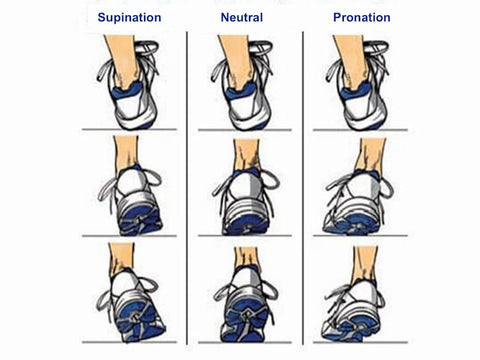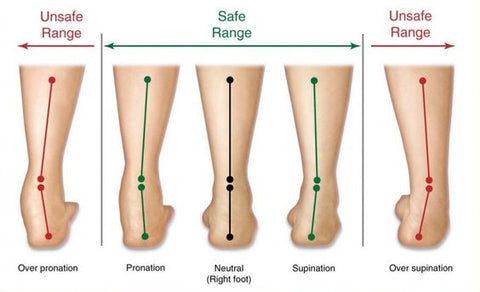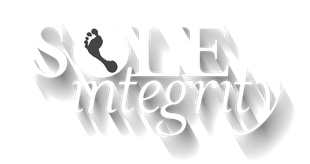How does your stride affect you? Pronation and Supination explained
Incorrect gait, the way your foot connects with the ground and moves through each stride, can cause all number of issues during exercise and even daily walking and activity. Problems can range from mild discomfort to severe pain, increased risk of injury and even life limiting dysfunction. These stride patterns are commonly categorised by the range and pattern of foot movement, the ones known for causing problems are called over pronation and over supination. There are a large number of factors that can cause an incorrect gait such as genetics, poor footwear, historic injuries, structural misalignment and exercise habits. Some of these factors can be fixed whilst others can only be managed. One of the best ways to fix and manage incorrect gaits is with proper footwear matched to your foot type by a professional, like the team at Sole Integrity.
Optimum Stride
As your foot moves through the optimum or neutral/normal positions during a stride it will supinate a little on take off as the heel leaves the ground and then pronate a little to absorb shock through the arch. If the levels and timings of the foot movement is outside of the safe level of pronation and supination then it is called over supination or over pronation and this is when things need to be addressed in order to mitigate any potential problems.

What is Supination
Supination is when the foot rolls outward on each stride. A small amount of supination is not unusual and tends not to cause too much problem. However, over supination is an excessive level of outward roll which can cause problems. Over supination causes issues by putting undue strain on the muscles and tendons that stabilise the ankle. People who over supinate on their stride are at higher risk of rolling their ankles all the way over and spraining the ankle or rupturing the ligaments.
What is Pronation
Pronation is the foot rolling inward on each stride, again a small amount of pronation is ok during transition from heel to toe, it is necessary for shock absorption. However, problems arise when the level of pronation is outside the angle determined as ‘safe’. Over pronating feet will roll inward through the arch collapsing the arch flat to the ground and can even be to a level where the person is running with the inside edge of the foot/bottom of the ankle. This can cause serious problems due to the lack of shock absorption and ankle rotation. These issues can have a flow on effect to the knees and hips as these compensate by also rotating inwards, essentially causing a misalignment through much of the body. Over pronation is more common than over supination.

How to tell if you have a problem with over pronation or over supination
There a several easy ways to determine if you have a potential issue in your gait. First of all, you will likely have experienced some discomfort or pain in your feet, ankles, knees and possibly even hips and back when running, walking or exercising. You may be prone to shin splints, plantar fasciitis, sore knees, knee knocking or sprained ankles or a range of other painful or uncomfortable symptoms. In order to figure out if it is over supination or over pronation or another problem the best thing to do is to visit a podiatrist who will run a number of tests including gait analysis to diagnose the issue. If you are unable to see a podiatrist then there are some other, less robust ways to figure it out that can be done at home. The two most common are to look at the outer soles of your shoes and to look at your footprints.
- To assess your footprints simply wet your feet and then step onto some brown paper or a dry patch of concrete or ink them and step onto paper if you want them to last. You can see examples in the image below and match your prints to see whether you have a normal pattern or a pattern of pronation or supination. A pattern of over pronation will show a very wide footprint where most of the arch is in contact with the ground. A pattern of over supination will show a print where the ball and heel of the foot are visible but there is a large gap where the arch is and even a small gap along the edge where the entire length of the foot isnt connecting. A normal arch will show the whole foot minus the highest point of the arch, there will be good connection between the heel and the ball of the feet but a nice curve of space where the arch doesn't touch the ground.
- To use the outer soles of your shoes for analysis choose a shoe that has been well worn, preferably a shoe you use for running or exercise. Flip it over and look at the bottom of the shoes where it strikes the ground, you will be able to see a pattern of wear. The parts that are most scuffed and worn down and thin are the parts of the shoe that are getting the most pressure and repeated contact with the ground. These areas will echo the parts of your feet that are taking the most pressure during your activities and will be able to show the pattern of your stride. Look at the image below to help determine the way the wear on your shoes correlates to foot stride. If the sole is most worn through the outer middle of the heel and worn in a balanced centered pattern on the ball / forefoot area then your gait is most likely correct. If the pattern of wear focuses on the inner edge of the toe and heel then you may be over pronating. If the pattern of wear is most pronounced on the outside edges then you might be over supinating.

Image sourced: https://www.solescience.ca/

